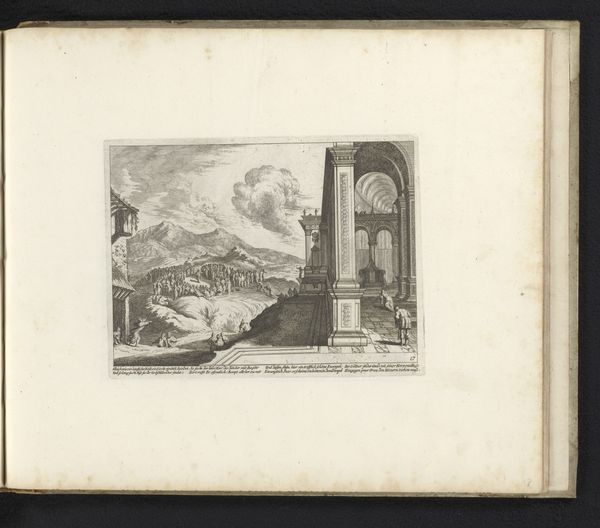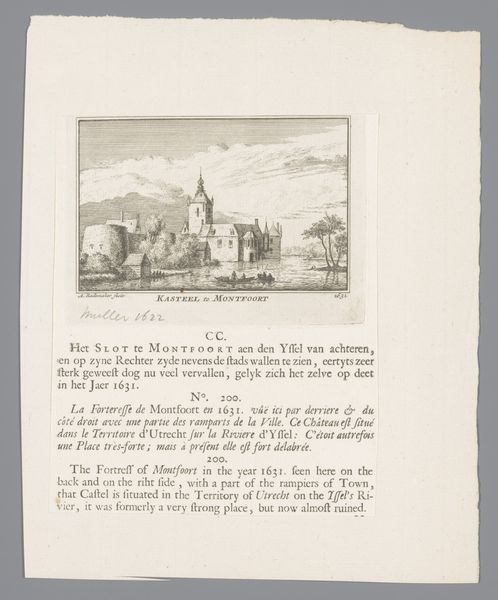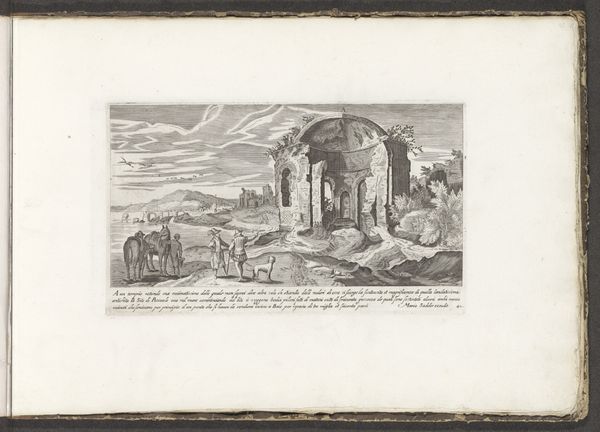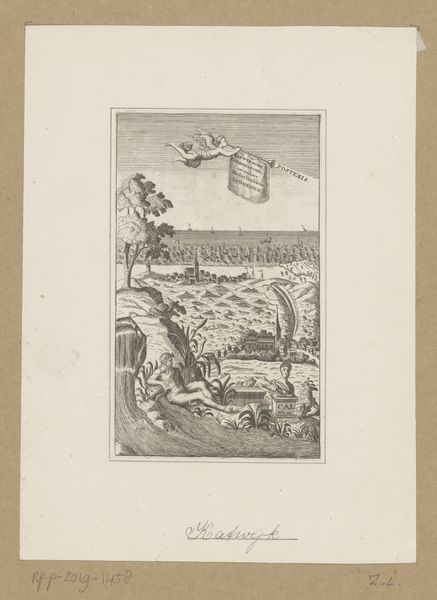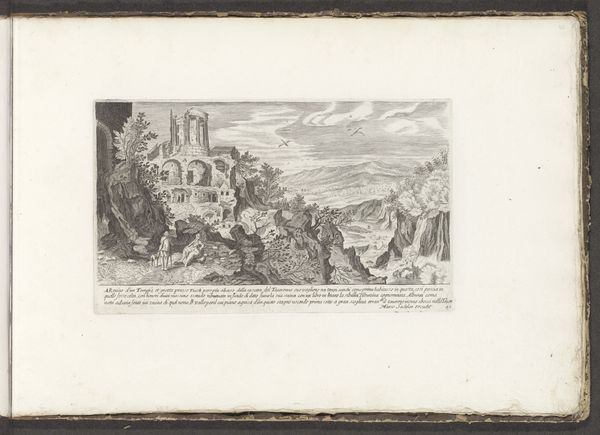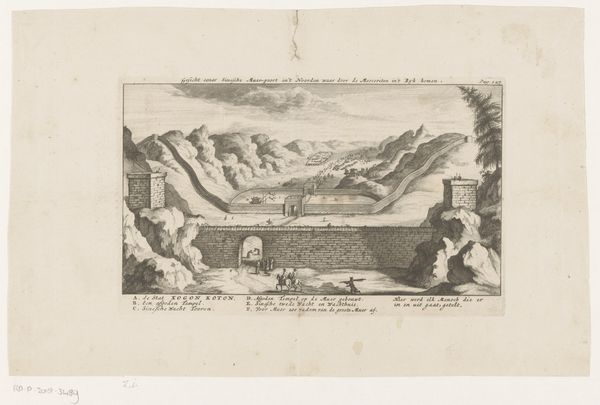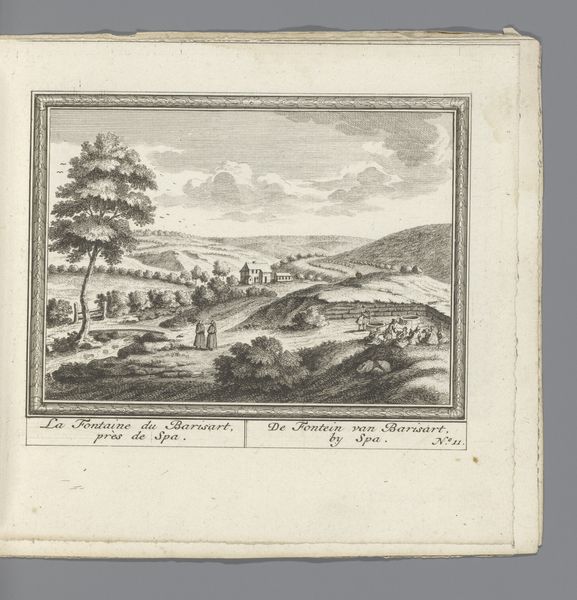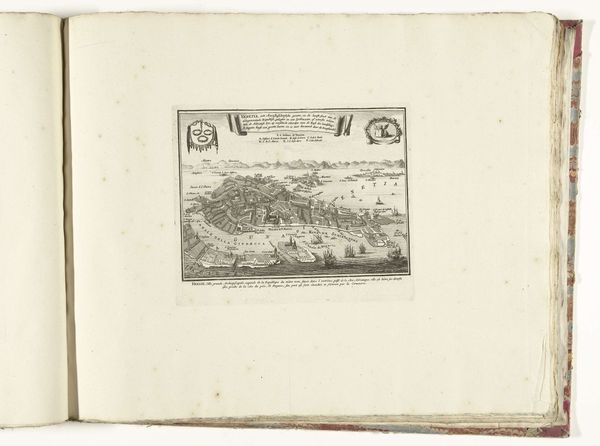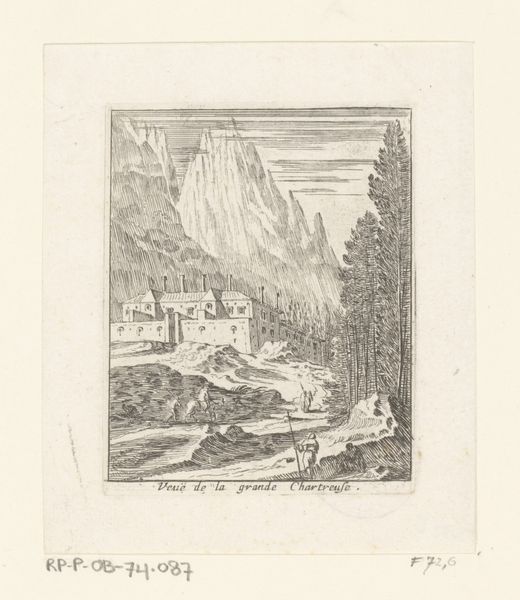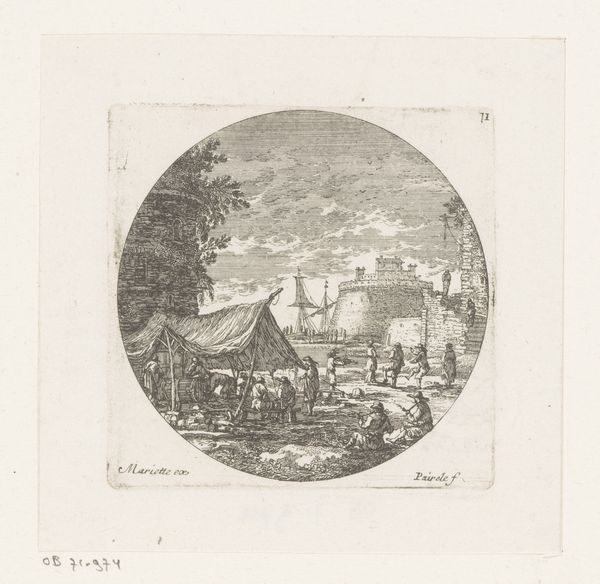
print, engraving
#
baroque
# print
#
landscape
#
cityscape
#
engraving
Dimensions: height 154 mm, width 124 mm
Copyright: Rijks Museum: Open Domain
Curator: Editor: Here we have "Gezicht op Slot Abcoude," a cityscape by Abraham Rademaker, from 1725. It's an engraving, giving it a certain austere charm, don't you think? The buildings seem to huddle together, almost defensively. What catches your eye first? Editor: That tower, definitely. It looks so…sturdy, even in ruin. And those two little figures walking beneath it—they emphasize its massive scale. What's your read on it? Curator: To me, it sings a song of time. Look at the intricate details Rademaker managed to capture. There’s the sense of the baroque fascination with light and shadow playing on crumbling surfaces, yes, but I also feel the weight of history pressing down. Those Romanesque arches hinted at in the description—they whisper of vanished empires. Almost like ghosts layered on the present. Editor: "Ghosts layered on the present"—I like that! It feels like more than just a record of a place. There is a certain stillness within all the crumbling. It also highlights a contrast: The figures add movement, suggesting ongoing time. But time past lingers in the image. Is this image then making some type of argument on time and decay? Curator: Ah, a thoughtful observation! An engraving like this, made to be reproduced and shared, perhaps carries an encoded argument indeed: one of resilience in the face of temporal decay. The enduring appeal of ruins, the way they spark our imaginations—what does that say about our own mortality, and the civilizations we create? Is that what Rademaker meant to communicate? I doubt it. The artist likely aimed to document, in great detail, a sense of location at one specific point in history. Yet a curious student like you brings additional interpretive lenses, with the beauty of seeing additional dimensions not immediately visible to others. Editor: So it's a reminder that every image, even one seemingly straightforward, holds endless stories waiting to be told, interpreted and argued? I am grateful to have these new interpretative tools, and now will likely not look at cityscapes, old and new, in the same way!
Comments
No comments
Be the first to comment and join the conversation on the ultimate creative platform.
